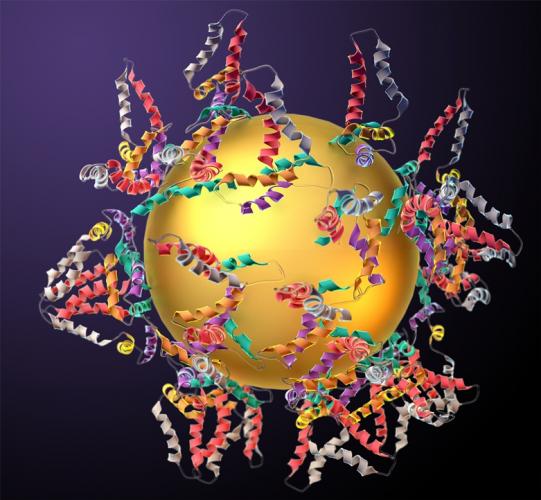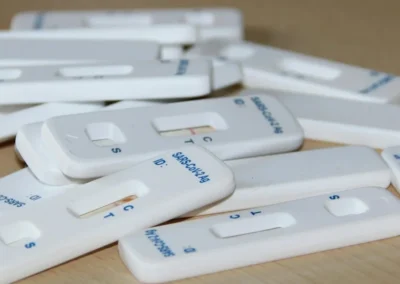Chi-Ming Yim, working as a postdoc in the LCN group of Geoff Thornton, has discovered an intriguing phenomenon in adsorption properties of nanoparticles. Low temperature scanning tunnelling microscopy (STM) experiments, carried out in the LCN, have allowed direct imaging of carbon monoxide molecular over layers formed on the palladium nanoparticles themselves supported on a titania substrate. Measurements of molecular orientation on a single nanoparticle using facilities at the Diamond Light Source indicate that the molecules behave in the same way as on a single crystal surface. However, with the higher spatial resolution of STM, Pd nanoparticles can be seen to grow like a carpet over substrate step-edges giving rise to a curved top facet (see Figure). Yim found that on the curved top facet of the nanoparticle, the adsorption behaviour of CO molecules is found to differ from that on single crystal surfaces. Theoretical calculations suggest that this is caused by strain, induced to the particle surface during the carpet growth.
This result has important implications beyond our basic understanding of the chemistry taking place on supported nanoparticles. This support morphology effect will have a decisive impact on the rate of chemical reactions. It also suggests a method of tuning the reactivity of multi-component systems by designing nanoparticle/substrate interfaces.
Geoff Thornton, coordinator of the project said “ In this work we have combined world class experimental facilities at Diamond Light Source and the LCN as well as cutting edge calculations to unearth a key role of an oxide support in heterogeneous catalysis. The metal nanoparticles, which form the active ingredient of a catalyst are structurally distorted in a subtle manner to change the way that they interact with reactants and products in the catalyst. With this knowledge we can design the metal support to maximise the efficiency, reducing the amount of the expensive metal needed in, for instance, your automobile catalytic converter.”
The work was supported by a European Research Council Advanced Grant entitled “EnergySurf” as well an Engineering & Physical Science Research Council NextGeneration grant.
Click here to see the full research article, ‘Influence of support morphology on the bonding of molecules to nanoparticles’ published in PNAS.



